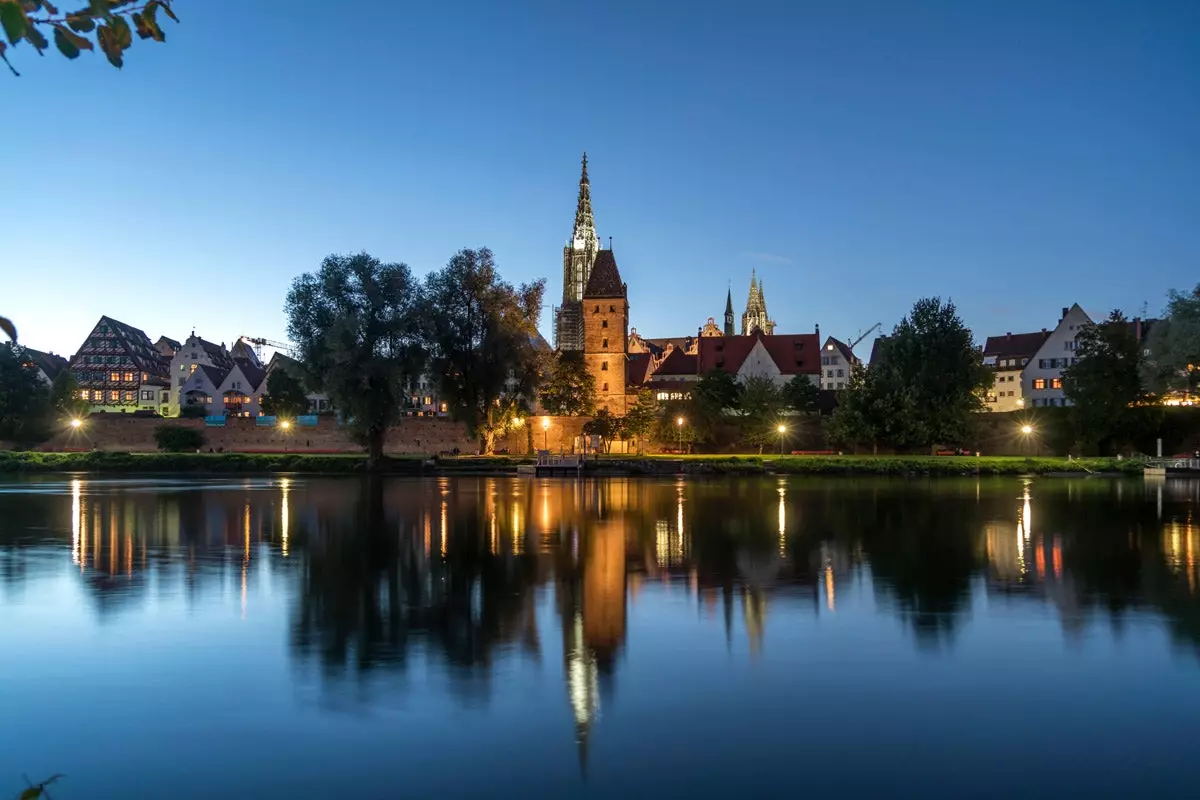
It is the city of the perfect German cliché
Ulm is probably the most Bavarian city outside of the Bavaria region . Located east of Munich, it is full of secrets that touch, surprise and, above all, instruct. Because, not another thing, but Ulm is a place of learning , of personal reflection, of apprehension, of deliberately letting yourself be grabbed. You will find few guides about her, but we have dissected her so that you can savor her historical and avant-garde delicacies . We are leaving you with some clues: it is the birthplace of the most successful scientist of the 20th century, it is home to the tallest church tower in the world, the most inclined house on the planet and bucolic landscapes facing the Danube River that flows calmly dividing the state of Baden-Württemberg with that of Bavaria.
THE TALLEST CHURCH IN THE WORLD
Ulm was for a long time an independent city of the German empire and governed by a council of citizens until the beginning of the 19th century. Its inhabitants were responsible for the construction of this city. Everyone collaborated financially in its development, ensuring that it had the 'basic' social facilities to live together. One of the biggest projects of this collaborative citizenship was the construction of the Ulmer Munster , a beautiful evangelist cathedral - in 1530 the citizens of Ulm voted overwhelmingly to convert to Protestantism - which boasts of having the tallest stone tower in the world with 161 meters. The first stone was laid in 1377, although the construction of the cathedral was not completed until 1890. That is why during all that time it was generated with different architectural styles. In fact, there are many who maintain that they cheated to obtain the tallest tower in the world, since they decided to place more stones when the Cologne Cathedral was surpassing it in height. In total they are 768 steps (arranged in the form of a snail) to reach the top of the tower. We warn you that it is an arduous effort, but that it will be worth it if you want to glimpse the best views of the city.
“This democratic policy continues to this day” says Walter, a proud citizen who does not hesitate to show me the best of the city. "The inhabitants continue to donate money to restore old buildings or create new spaces." They are clear: everyone must contribute to social life, developing schools, hospitals and cultural centers, and thus follow the democratic tradition that exempted it from the Holy Roman Empire. becoming a Free City. "It's a very 'citizen' city," he continues, "that's why it's also a very rich city."
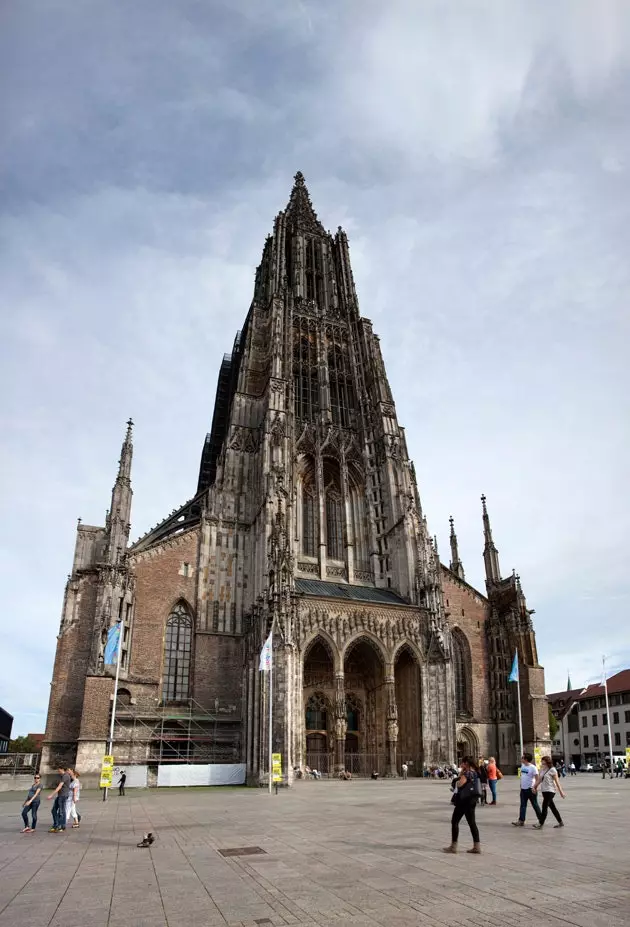
Ulmer Munster
SCIENTIFIC CITY
But Ulm is not only rich in spirit, it also boasts a strong economy. It is the city with the lowest unemployment rate in the region (less than 3%), and one of the cities that invests the most in research. Medicine, mobile communication, automobile technology and alternative energy , these are the four big bets of Ulm, which are concentrated in its Research Center, a few kilometers from the city. One of the most prominent is the daimler benz center (Mercedes), which was built by the renowned American architect **Richard Meier**, Pritzker Prize and gold medal by the American Institute of Architects. Yes, yes, the same one that designed the contemporary art museum in Barcelona. As I drive around the research center, I can't help but ask myself these questions: Why Ulm and not another city? Is it because it was here where he was born Albert Einstein , the most representative scientist of the last centuries? Walter laughs, and blurts out: “It could be, but it has more to do with the efforts made by the University of Ulm to find companies that would work with it. In the end they have managed to bring even Mercedes!”.
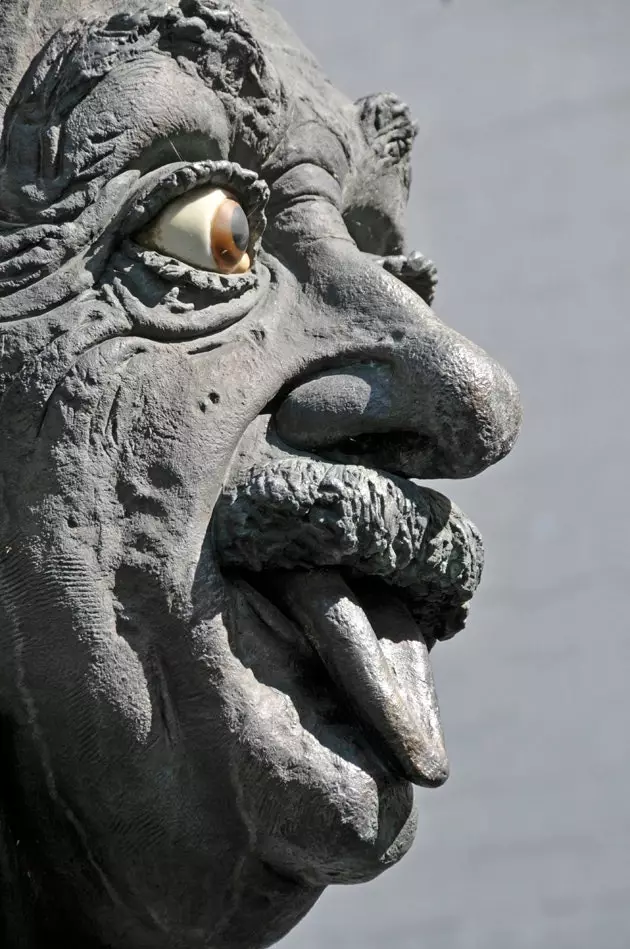
Einstein
ITS HISTORICAL CHARACTERS: EINSTEIN AND HIS TAILOR
Even if you don't believe it, Ulm does not exploit the image of Albert Einstein as other cities would have done. It is true that there are marathons with his name, that there is a representative monument that remembers where the house in which he was born was or a fountain in which he stands out a bust with the iconic image of the genius sticking out his tongue. But the truth is that the traces that the illustrious scientist left in the city were few, because when he was one year old he moved to Munich. Few traces remain of it, except for a letter that is exhibited in the City History Museum in which he thanks the honors that his native city grants him.
However, there was another character who made more history in Ulm than Einstein. He was not a scientist or an artist, but his occurrence was talked about generation after generation in the mouths of grandparents, parents and uncles until he became a legend. I found out about her when Walter accompanied me to the tourist information point. “A map of the city for this Spanish lady”, he asks the center worker smiling. She smiles proudly and asks “Have you told him the story of the Tailor of Ulm yet? ”. It was 1811 and a certain Albert Ludwig Berblinger, city tailor, he had dreamed of flying in front of Frederick I of Wurtenberg. To do this he built wings with wood, cloth and fishbones and tried to take flight from the Bastion of the Eagle of Ulm, they say, in front of the Danube. The failed attempt caused him to fall into the river and be the laughing stock of the city. Despite this, this is one of Ulm's most beloved characters, and today a bronze plaque commemorates the point at which the inventor fell apart. By the way, not far from there you will find a nice little bar-gallery at the level of the Danube, the Stiege . He is barely three years old and you will find him hidden after going down some stairs in the corner of the Herdbrucke street.
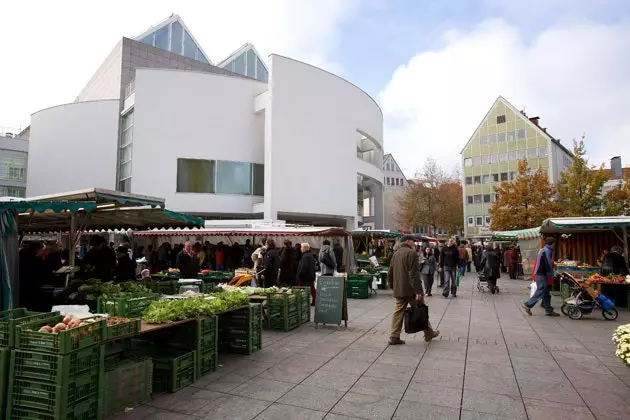
Einstein's house
THE FISHERMEN'S NEIGHBORHOOD
In my opinion, the prettiest district in Ulm is the old fishermen's quarter , the Fischerviertel. Located to the southwest of the city, this area forms an idyllic landscape, where the waters of the Blau and Danube rivers flow. Walking through its narrow cobbled streets and crossing its little bridges is undoubtedly one of the most beautiful walks in the city. Right in that neighborhood is the most famous house (now converted into a hotel) in the entire city, the Schiefe Haus. It is the most inclined house in the world due to its location on the banks of the Blau river. To this day, and for a long time, it is one of the busiest hotels in the city, next to Hotel Bäumble, the oldest, built in the 15th century. Around the Fischerviertel neighborhood you'll also find the historic Wirtshaus Krone and Forelle restaurants, which have been open since 1626 and serve up finger-licking traditional German food.
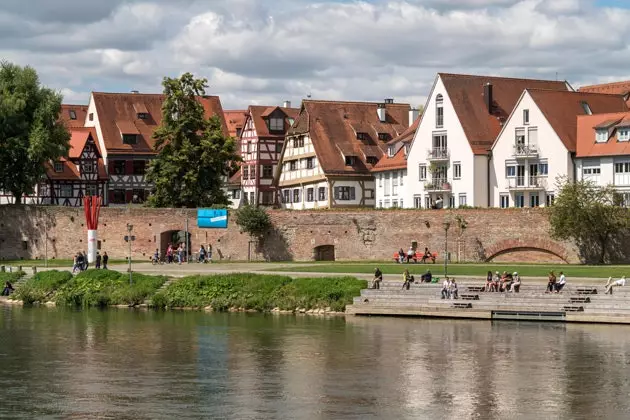
fishermen's quarter
Within the neighborhood there is also the Rat House and the Stadthaus , two Ulm badges. The first is the town hall, a building built in 1370, whose colored facade and many illustrations and its astronomical clock (installed in 1520) will dazzle you. The Stadthaus is a building that contrasts with its new and modern architecture. Also designed by Richard Meire in 1993, it is now the cultural center of Ulm.
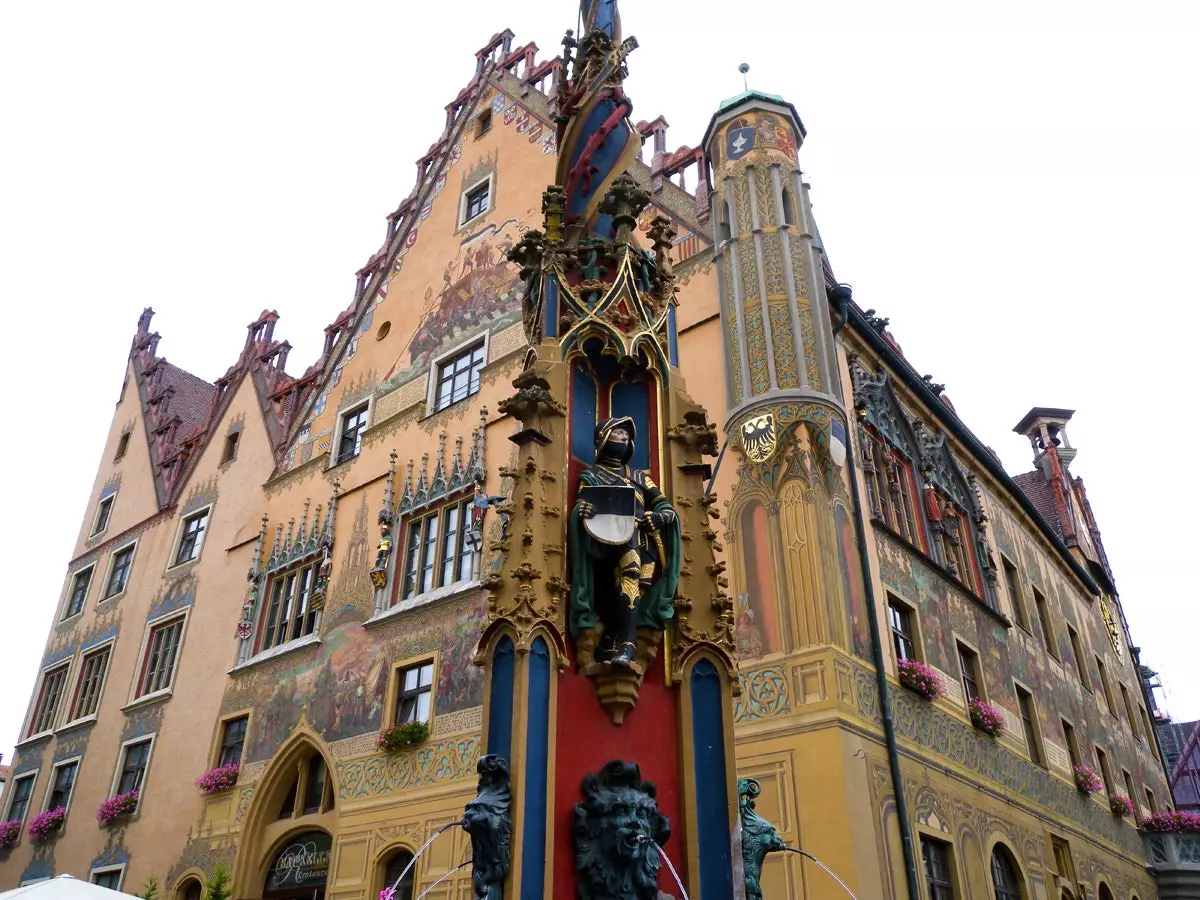
Rat House
SHOPPING? ALSO
Crossing the cathedral square to the north, you will find a neighborhood very similar to that of the fishermen, but with a notable difference: its boutiques. . In Ulm the image is very careful and the local economy is very careful, For this reason, it is full of small and charming craft shops. From toys, jewellery, garments or chocolates, everything is made with love in their workshops and kitchens, to later boast of their presence and quality in the shop windows. Although no city is spared, since you will also find more commercial stores with tourists buying postcards or any other souvenir. Another place you shouldn't miss is on Herrenkellergasse. We are talking about the ** Ulmer Zuckerbacker **, the oldest bakery in the city, with more than 178 years. After so much walking, a sweet and a coffee never feel bad. Specialties? All!
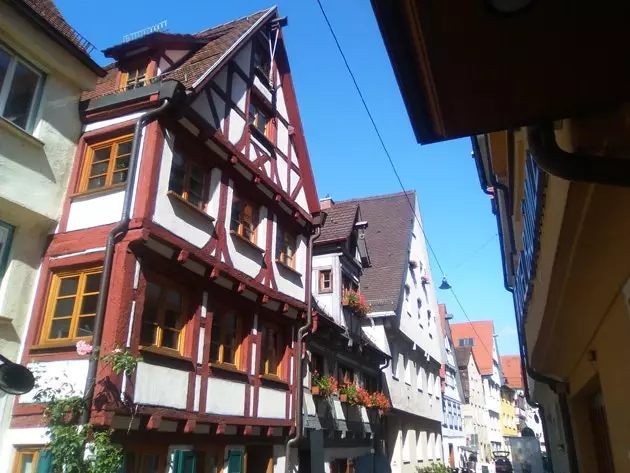
Shopping north of the cathedral
THE WEEK OF THE OATH
This is a tradition that dates back to the birth of the city and that takes up the medieval tradition that on the penultimate Monday of July the mayor swears from the balcony to be faithful and serve the citizens. And boom! The party is served. The Saturday before the Monday of the Oath, the lichterserenade , a serenade of candles that dress the nocturnal Danube in light in an incredible visual spectacle.
But the real party is celebrated on the same Monday of the oath, when hundreds and hundreds of people leave their homes ready to soak in a day full of fun. It consists of sailing the Danube in wooden boats, inflatable boats, canoes, rafts (many of which are made by the Ulmers themselves) as they douse each other with plastic spray guns and buckets of water. I swam in the Danube that day and I have to say that the feeling of being on top of the boat is much better than under the water, however, it is a risk that you must take if you want to participate in one of these crazy parties that ends with boats crashing each other when they reach the end of their journey, at the **Friedrichsau**. This is the largest park in Ulm and, during those dates, it fills up with hot dogs and German beer (the Ulmer Gold Ochsen) in the Biergarten, popular restaurants with very cheap prices where you dance, sing, drink and eat Bavarian style. A tradition that comes from German romanticism. There are several landmark biergartens within the park, such as the Hundskomödie , an Italian restaurant with a great sense of humor and affordable prices. Although without a doubt the best restaurant, not only in Friedrichsau, but in the whole city, is Lake , which is found inside the hotel with the same name and has incredible views of one of the park's lakes.
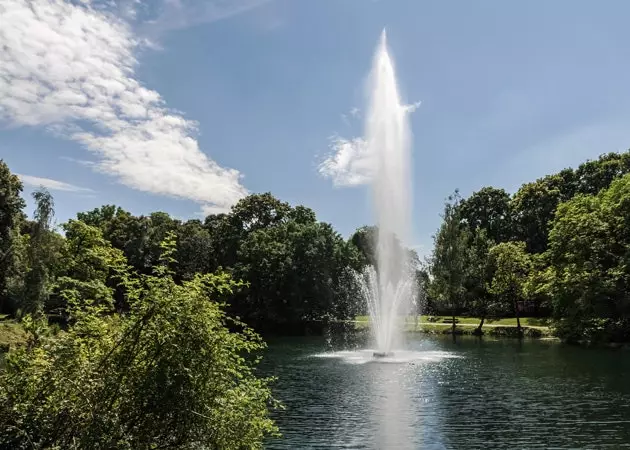
Friedrichsau
THE BEST RIDES, BY BICYCLE
Not far from Ulm are two small towns, Lautern and Blaustein , at the foot of the mountain. They are two places known to lovers of cycling and hiking, approximately 10 kilometers from the center of Ulm and 4 kilometers from Blaustein. Hikers usually follow the Blau River until they find them, passing through lush green forests. In addition, one can take (cold) baths in the river. This route began to take shape thanks to Los Amigos de la Natura, or the ** Naturfreunde **, a club that has its origins in the romantic period and that claimed the importance of nature. Today they continue to exist and have made up routes and two restaurant houses that are only open on weekends, the Naturfeunde- Haus Spatzennest . They provide shelter and food and are open to the public. You can also stop to eat at the restaurant Gasthaus Zum Lamm , the house of lamb, with a regional cuisine where they have been preparing their star since 1950: the schwäbische küche, made with chickpeas, spätzle and sausages. Another place your stomach will love is the Zum Rössle, in Blaustein , a small traditional German organic food establishment, next to the historic theater The Citerei. By the way, do not try to search for them in Google, we have already tried it in a totally unsuccessful way, although we assure you that it is worth finding them. Your palate will appreciate it.
bluestein is well known for hosting the grave of the most famous Nazi general, Erwin Rommel. Rommel boasted of being a field marshal of Hitler's Army and the highest representative of the Wehrmacht's high officers, although in the end he became a victim of the Nazi dictatorship by participating in the resistance. Legend has it that he was part of a plot to assassinate the Führer , although the truth is that his soldier nature always prevented him from doing so. Adolf Hitler gave him the choice between a summary trial before the People's Court, which would entail eternal suffering for his family, or forced suicide. "I served my country to the best of my ability and would do so again," was one of his last words.
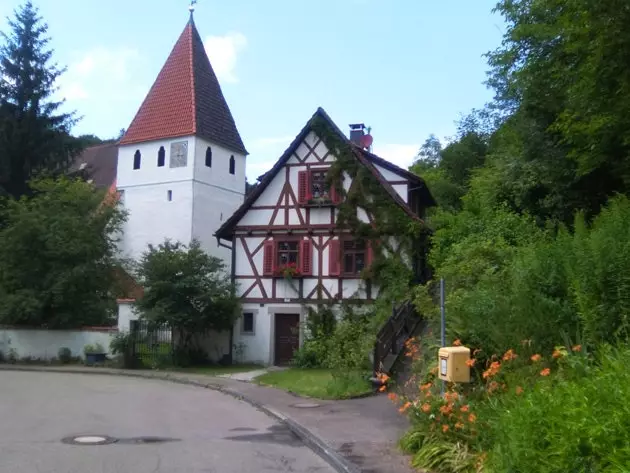
bluestein
